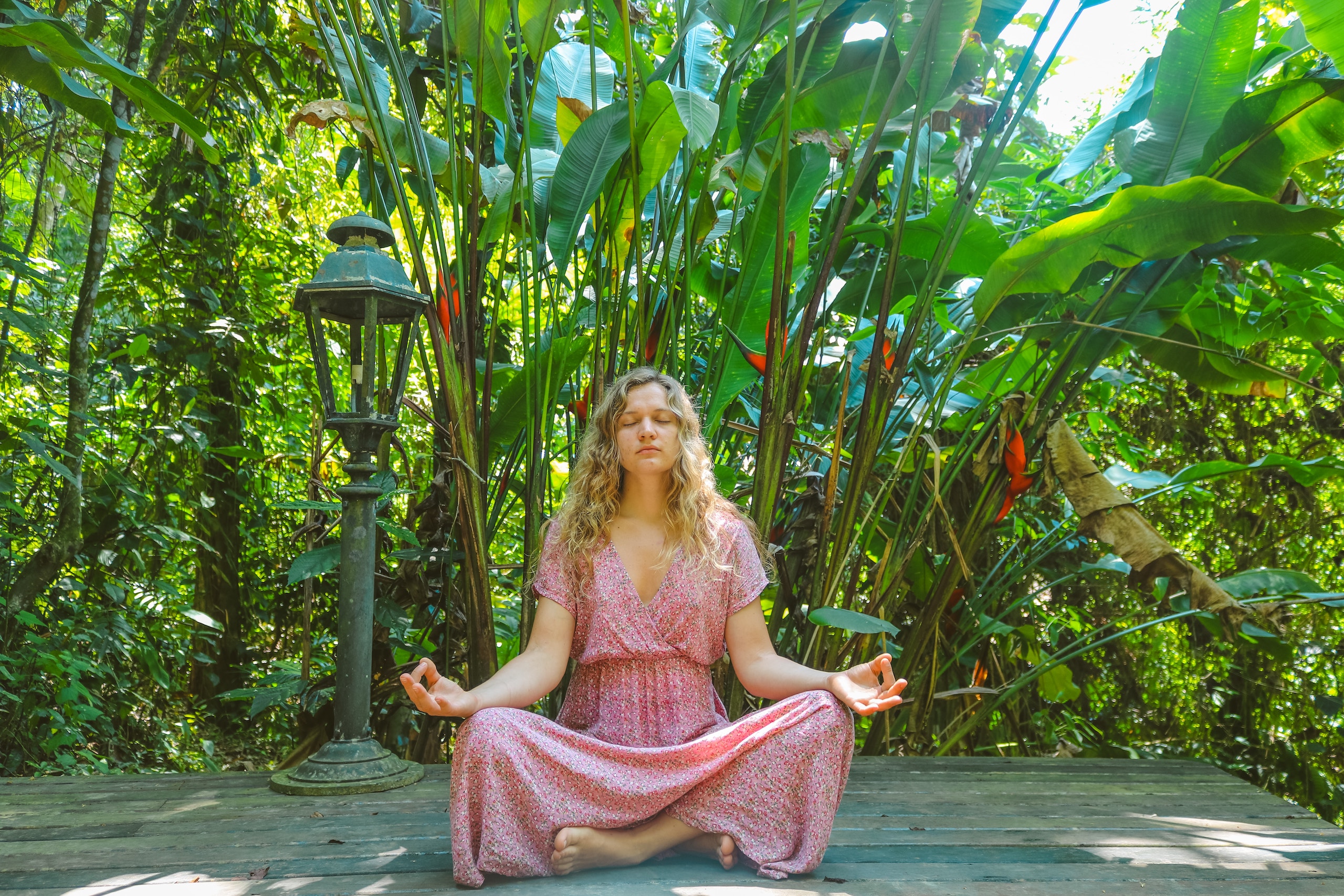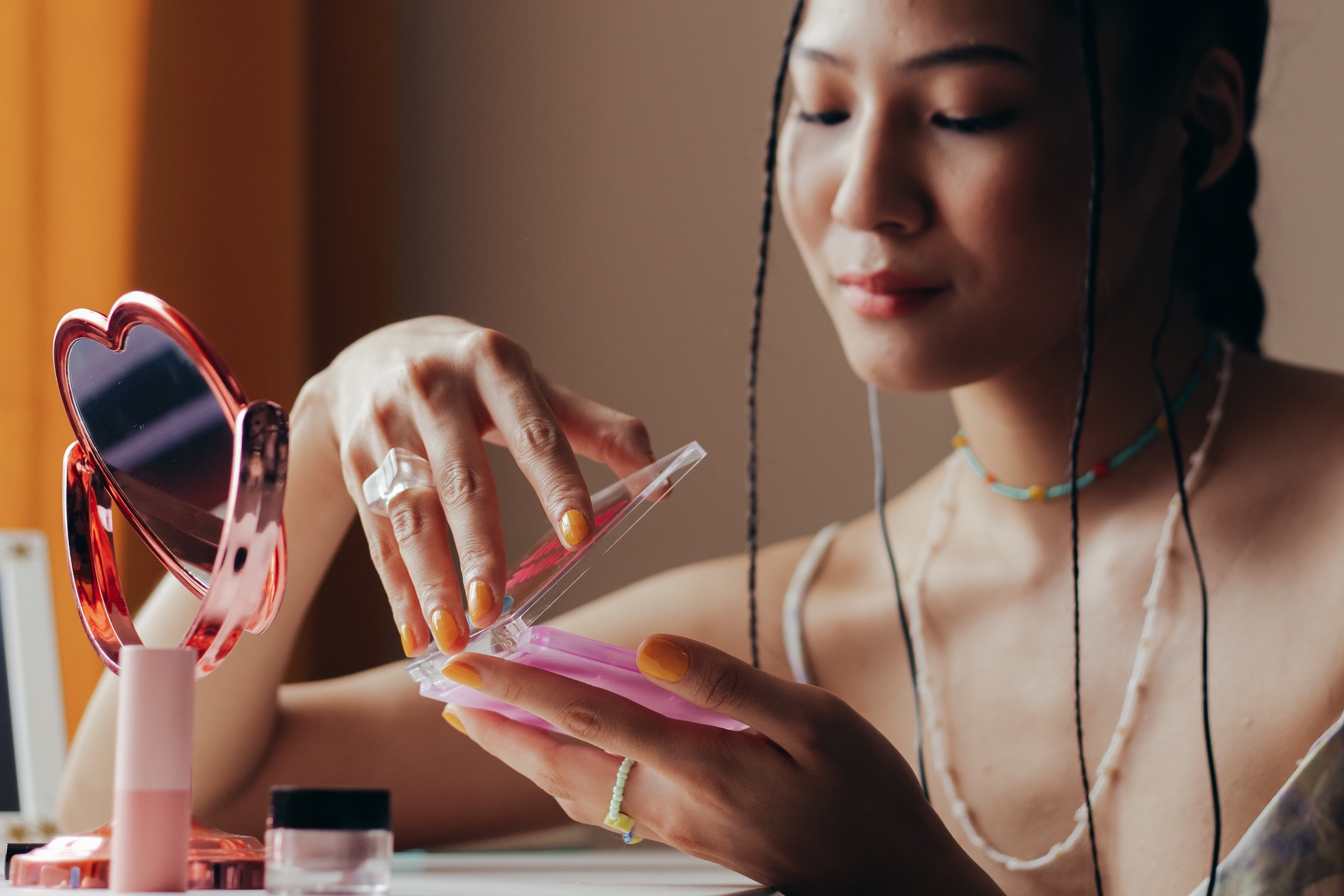
Physical Rest
author/ amanda/ august 17, 2023

Physical Rest

Mental Rest

Emotional Rest

Sensory Rest

Social Rest

Creative Rest

Spiritual Rest
Rest is so much more than it seems. As humans, we are multifaceted beings and with that, there are also various dimensions of well-being that we need to take into consideration. There are seven types of rest that are essential to your overall health and they are interconnected. When used effectively, they can help prevent burnout and enhance your ability to engage fully in your daily life. As always, it’s important to tailor your approach to rest based on your individual needs and preferences, and make it a priority to care for all aspects of your health. Resting can be particularly demanding and challenging for AuDHD girls and women. It may appear on the outside that she is resting and relaxing, but her mind is far too active and overpowering. Her brain is more akin to a raging thunderstorm than a clear, blue sky. Sometimes, no matter how hard an AuDHD girlie tries to rest, she becomes even more stressed about all the things that she could be doing and everything that needs to be completed, but she is unable to get up and complete them, instead feeling paralyzed and glued to the bed/couch/phone. To a neurotypical on the outside, this may look like laziness or incompetence, but this assumption is entirely wrong and frankly insulting. If you are an AuDHD girlie who struggles with rest and relaxation, talk to your doctor (if at all possible) and find out if there are any medications, vitamins, or holistic approaches you can take in order to improve this. Be sure to do your own research and advocate for yourself. If you are unable to advocate for yourself, bring a trusted family member or friend who can advocate for you.
Now, let’s take a look at the seven types of rest and their benefits:
This is the type of rest that you are most familiar with! It is important to get adequate sleep and allow your body to recover from physical exertion that occurred throughout the day. This is crucial for repairing your tissues, boosting immune function, and maintaining overall vitality. If you are a girl or woman with AuDHD, you may be holding tension in your body subconsciously. This may look like jaw, neck, and shoulder tension. You may also hyperextend your knees, clench your booty cheeks, or sit in unique positions that aggravate your body. It is important to approach physical rest in an effective way to combat the issue of stress and tension giving off physical symptoms. Physical rest can be both passive and active. Examples of physical rest include:
Adequate and quality sleep is essential for overall health for a ton of reasons. Think of sleep like restarting your body’s computer after an update. During sleep, your body repairs tissues, strengthens its immune system, and supports cognitive function for when you are awake. Adequate sleep is proven to combat stress, lack of focus, and mental clarity among so much more. This may be passive physical rest, but it is quite possibly the most important.
Short naps can provide a quick energy boost and improve alertness throughout the day. Napping can help you feel renewed and recharged if your day is not yet over. If you are not able to get proper sleep during the night, a midday nap may be necessary to boost your mood and performance.
Engaging in activities that relax your body, such as deep breathing, progressive muscle relaxation, or gentle yoga can alleviate physical tension. Stretching your body and getting massages/acupuncture are great ways to actively rest your physical body. Lastly, if you frequent places such as work and/or school, it may be beneficial to make these places as comfortable and alleviating to your physical body as possible. This might look like acquiring a new chair/alternative seat that betters your posture, replacing your desk for one with a standing option, or getting up every half hour to stretch.
Mental rest involves giving your mind a break from constant thinking, analyzing, and problem-solving. If you are a girl or woman with AuDHD, I’m looking at you, girlie pop. Engaging in activities that calm your mind can help refresh your mental energy. It’s easy to lose focus, forget important things, and ruminate on negative thoughts, especially for AuDHD girlies. Since your brain is always working overtime, mental fatigue is REAL and needs to be addressed for your overall well-being. Examples of mental rest include:
Everyone deserves to have time where they can just “turn off” their brain and enjoy mindless entertainment. Maybe you want to watch an entire season of Sabrina the Teenage Witch, the show you’ve seen a thousand times, or scroll on Tiktok for an indeterminate amount of time. Sometimes, this is necessary to give your brain a break from everything else. Yes, it’s a little bit like escapism, but if done in moderation, it’s a great way to let your brain chill out.
Meditation encourages mental stillness and cultivates a sense of calm and clarity. It can be a challenge not to get your mind to wander mid-meditation. It might be beneficial to listen to a meditation video online, but pick someone whose voice you enjoy following along with. You may fall asleep doing this, but don’t see that as a negative! Clearly, it’s what your body needed at the time. It’s valuable to focus on what you are doing in the present moment, not allowing your mind to wander to the past or future. It may take time to acknowledge and accept yourself and your thoughts in the present moment, but it’s definitely something to work towards!
Guided imagery is a lot like reading. You picture the scenes and characters in your mind’s eye and imagine them a certain way. Visualization exercises are a lot like this! They can redirect your thoughts away from life’s stressors, allowing your mind to rest. When listening to visualization audio, you can be mentally transported all while keeping your mind engaged and your imagination stretched.
Emotions can be so draining, especially for those who are highly sensitive. Emotional rest involves acknowledging your feelings (without judging them!) and finding ways to recharge. Engaging in activities that focus on self-love and inviting joy into your life can help to regulate your emotional well-being. AuDHD girlies can be exceptionally cruel to themselves with negative speech and negative self-talk. You need to make the conscious decision to change that. Unfortunately, it’s not going to happen overnight and you have to put in the WORK. Examples of emotional rest include:
Treating yourself with kindness and understanding, even during challenging times, reduces emotional strain. Use kind and thoughtful words when talking to yourself and about yourself. Self-love can take a lifetime, but every step counts. Recognize that you are having a human experience and you are allowed to experience the feelings that you have.
Writing about your feelings and experiences can help you process emotions and gain insights into your emotional well-being. This is effective, but is not for everyone. AuDHD girlies may start journaling for a few days and then forget their journal even exists, never picking it up again. If this sounds like you, consider writing on sticky notes every once in a while when something comes up and placing them in a jar. (Be sure to leave the jar and the sticky notes in a convenient and easily accessible location that you frequent a lot. Also, don’t impose rules or routines on yourself surrounding this activity or you will never do it again.)
Doing things you enjoy, whether it's reading a book, researching cold cases online, watching a movie, or spending time with pets uplifts your spirits. This is when it’s a good time to be selfish. It’s important to make time engaging in things that bring YOU joy and no one else.
Especially for a girl or woman with AuDHD, your senses are bombarded by stimuli throughout the day, which can lead to sensory overload. Sensory rest entails creating a peaceful environment, reducing unnecessary noise, and minimizing excessive sensory input to restore your nervous/sensory systems. Examples of sensory rest include:
Sensory reduction involves managing your sensory input. This might include spending time in quiet and relaxing spaces, dimming lights (turning off the big light,) or using noise-canceling headphones. Consider turning off unnecessary auditory notifications on your devices, use white noise to drown out the construction workers outside, and turn the brightness down on your phone/computer.
Immersing yourself in nature provides a refreshing break from urban sensory overload. Though there are a lot of noises in nature such as buzzing bees and leaves blowing in the breeze, these noises are often predictable and less overwhelming than urban and suburban society.
Pay attention to sounds around you without judgment. This promotes sensory awareness without overwhelming your senses. Putting all your efforts into sound alone can help you tune into the world around you and all its little intricacies. If this is not your style, create a playlist and listen to music that makes you feel good.
While social interactions are important, they can also be energy-draining, especially for AuDHD girls and women as well as those who are introverted. Social rest involves taking healthy breaks from social interactions to recharge your social batteries. No, this does not mean to cut off social interactions entirely. It’s all about balance! This can be difficult to balance for AuDHD girls and women as there may be a tendency to self-isolate at unhealthy levels for a variety of reasons. Examples of social rest include:
Taking breaks from social interactions allows you to recharge, especially if you find social situations draining. It’s often hard to know when your alone time has gone too far until you realize you haven’t left your home in days/weeks/months except for the bare minimum. This can be rather unhealthy and is bordering on agoraphobia. Alone time is extremely valuable, but knowing when to venture back out is just as important.
Clearly defining your personal space and setting limits on your availability can prevent social exhaustion. This can be a challenge, especially for the AuDHD girlies who are people pleasers. Try creating and voicing one small boundary at a time and grow your confidence. It’s disheartening when those around you consistently refuse to respect your boundaries. That is entirely on them and not you. Know your limits and stay true to yourself. Of course, that is easier said than done.
Prioritize interactions with people who uplift you and provide positive social energy. It’s definitely quality over quantity. It’s far better to connect deeply with one friend rather than be in a room full of acquaintances/strangers. True friendships can be harder to come by as you get older, and it’s scarier to make friends wondering if they are genuinely on your side. Regardless, keep trying because the right people will find you.
Creative rest is a lot like connecting with your inner child. Your mind can become exhausted from dealing with the world, working, and going to school. Creative rest involves stepping away from necessary life stuff and engaging in fun activities that you enjoy, returning with a fresh perspective and the feeling of child-like wonder. Choosing something that you genuinely want to do that is outside of your usual day may help invigorate your life by bringing in excitement and inspiration. Examples of creative rest include:
Engage in hobbies and activities that aren't related to your work endeavors in order to give your mind a break. Do something out of the ordinary and try new things that inspire you and bring you joy.
Embrace activities that encourage play, as they stimulate your imagination without the pressure to produce. Think about visiting the zoo or an interactive museum that encourages touch and experimentation. Go on a zip-line tour or borrow creative books from the library and teach yourself a new skill.
Venture into new experiences and environments to spark fresh ideas. Try out an escape room or rage room to allow your body to think and act in new ways in different environments.
Spiritual rest involves finding meaning and purpose in life, connecting with your values, and taking time for self-reflection and introspection. This can be a challenge for many as answering the question, “What was I really made for?” is deep and feels far more unanswerable than otherwise. Regardless of that, you need to make YOU a priority. We all deserve to be seen and valued by others, but do you see yourself? Do you value yourself? Examples of spiritual rest include:
Take time to contemplate your values, beliefs, and purpose in life. The trick is to be honest with yourself. Self-reflection can be scary because it can feel too deep, intimate, and real which is why many avoid it. Asking yourself “what” and “why” questions is a great place to start.
Engage in practices that connect you to a sense of meaning, whether through spiritual practices, meditation, or spending time in nature. Taking just thirty seconds to a minute of silence in the present moment may be a great place to begin if this feels overwhelming at first.
Reflect on the positive aspects of your life to foster a sense of gratitude and fulfillment. Mentally or physically list some things you are grateful for in your life and try out using positive affirmations with yourself. You can also consider writing about things in your life you are grateful for on sticky notes and collecting them in a jar ro read on another day. (Be sure to leave the jar and the sticky notes in a convenient and easily accessible location that you frequent a lot. Also, don’t impose rules or routines on yourself surrounding this activity or you will never do it again.)